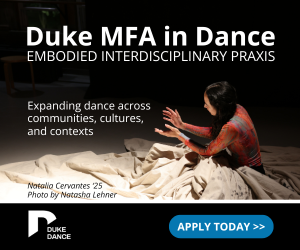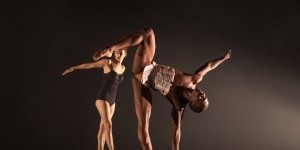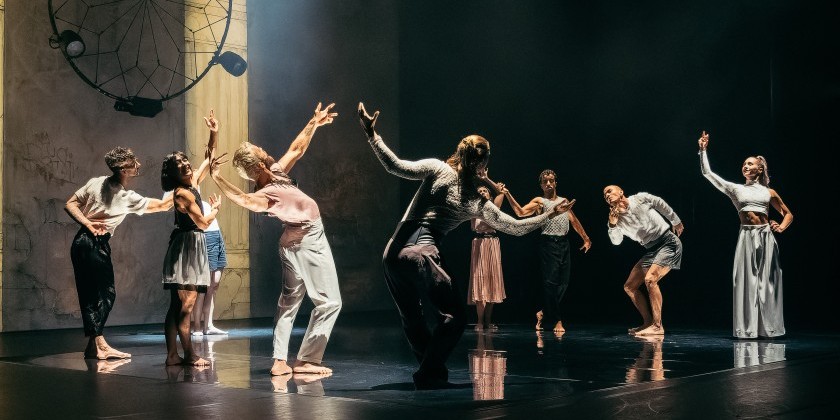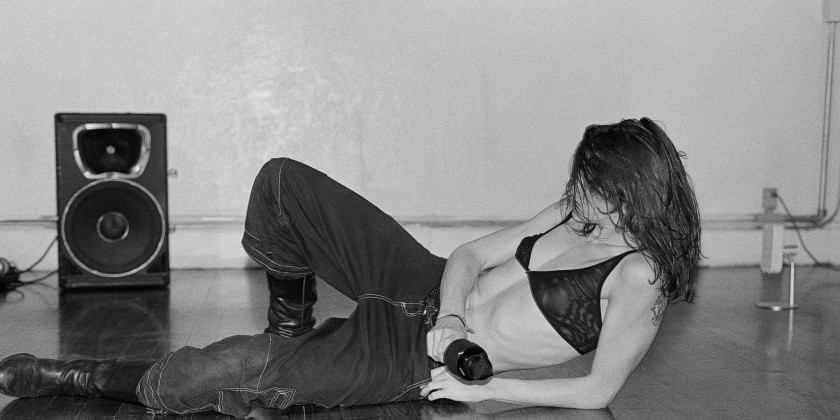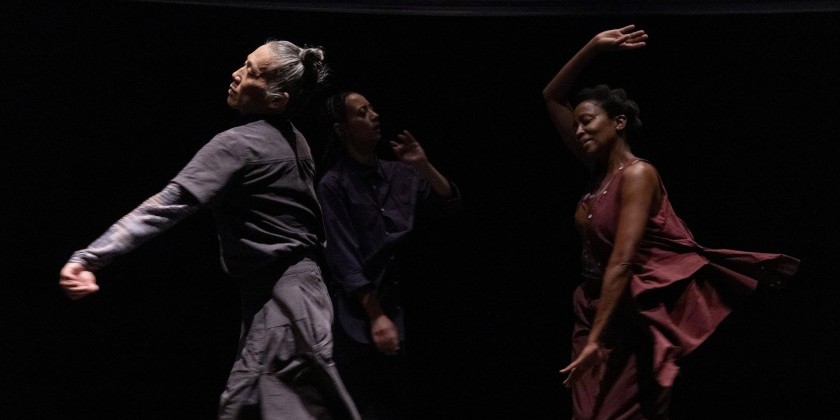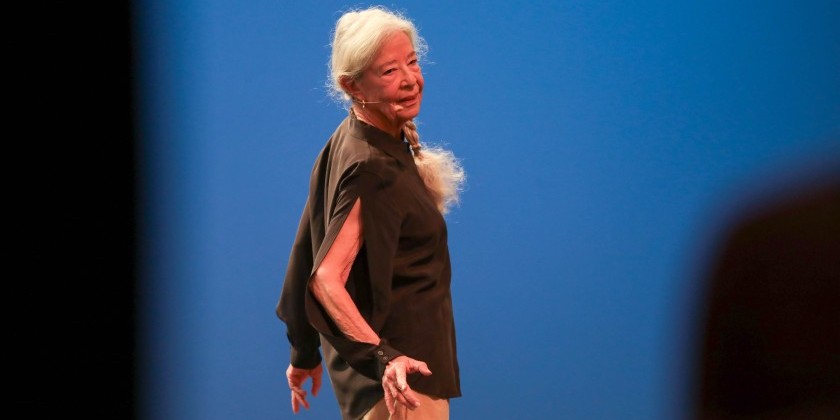SUMMER IMPRESSIONS: Trinity Irish Dance Company at Jacob's Pillow
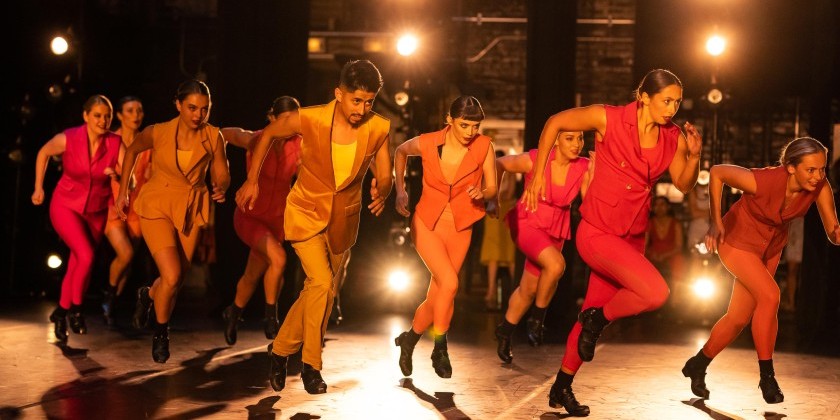
Jacob’s Pillow presents Trinity Irish Dance Company
Founding Artistic Director: Mark Howard // Associate Artistic Director: Chelsea Hoy
The Company: Maddie Cabral, Aubrey Chann, Courtney D’Angelo, Sofía Dorantes, Ali Doughty, Michael Fleck, Lydia Fredrick, Anna Gorman, Abigail Graham-Luke, Patrick Grant, Chelsea Hoy, Meaghan Kilmartin, Francisco Lemus, Phife MacGabhann, Margaret Nalley, Sydney Niewiedzial, Rachel Olson, Clare Rahner, Micah Roby, Reilly Sedlacek
Guest Artist: Taylor Yocum
Musicians: Brendan O’Shea, Chris Devlin, Jake James, Steven Rutledge
Ted Shawn Theatre
July 10 - 13, 2025
Based in Chicago, the trailblazing and acclaimed Trinity Irish Dance Company celebrates its 35th anniversary this year as the first Irish step dance company to present a full evening in the historic Ted Shawn Theatre at Jacob’s Pillow. Mark Howard, Trinity’s founder and artistic director, prioritizes Irish step dance, but welcomes other dance and movement influences. Traditionally, dancers grow up in the competitive Irish dance world of rules and constraints.
“It’s all about evolving the form so it can breathe,” says Chelsea Hoy, Associate Artistic Director, in the post-show talkback, “There’s one place that celebrates this form artistically (Trinity Irish Dance Company).”
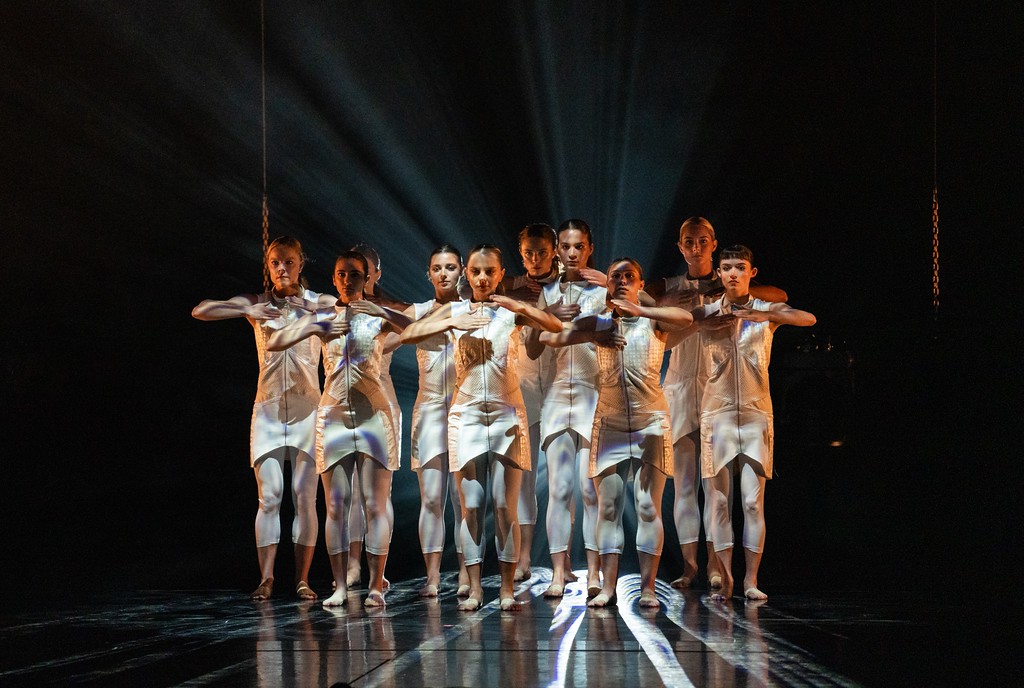
Trinity Irish Dance Company in Communion. Photo: Michelle Reid
Communion (2014), choreographed by Howard and Sandy Silva, aptly embodies Hoy's assertion. A radiant unison dance for a tight phalanx of twelve virtuosic women dressed in white, it is influenced by the simplicity of Japanese Noh, “which is the white space or the silence,” as Howard describes it.
The dance speaks to world percussive dance and song forms, and is performed barefoot, rather than in the hard or soft shoes of Irish step dance. An infectious percussive phrase tapped on the body accumulates with accompanying stamps of the feet and snaps of the fingers to traditional Scottish mouth music, known as puirt-à-beul, the Ho Ro Haradala song, sung a cappella by the dancers.
Their grouping disperses to the occasional underscoring strums of Jake James’ fiddle, and they fill the stage with precise shuffles, hops, and claps while drumming the fronts of their bodies. The contrasting, enlivening rhythms alternate with silence. In a satisfying shift, the dance ends quietly with a single mover, encircled by the company, repeating a softly-evolving reprise of an earlier snapping-tapping-stepping phrase. Illuminated in a cone of white light, the dancer slowly looks out to us and exhales.
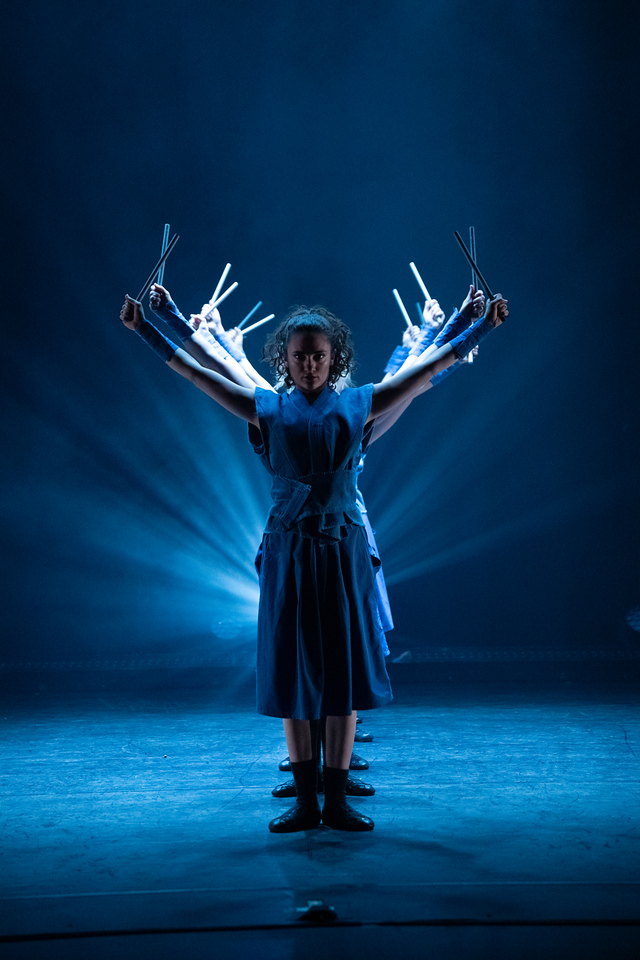
The company showed its range in the remainder of the program. Howard’s Black Rose (2004/2023), a wow of a dance, is influenced by the Japanese Kodo drumming ensemble that features the traditional taiko drum (TIDC has toured Japan for 20 years), showcasing the dancers’ rhythmic prowess with sticks in hand. They drum the floor in response to the huge Northern Irish Lambeg drum, nicknamed “Big Horse,” booming center stage, and held chest high by Steven Rutledge.
Says Howard in the talkback, “It’s not difficult for our dancers to pound sticks in the ground. It probably took ten minutes because percussion lives inside of their bodies.” A live band that plays its own sets between dances, led by singer and guitarist Brendan O’Shea, heightens the evening’s energy.

Bright, pulsing lights amplified the spectacle, which felt like an unnecessary reach for a Riverdance ‘look’. The reliance on unison movement and evenly spaced dancers, a hallmark of Irish dance, so satisfying on one hand often seemed an easy out, given Howard’s assertion that he is expanding the form, and not all the genre meshing was successful (the all-too-familiar modern dance duet in the company's latest offering, The Sash).
However, Howard proves himself a choreographer of striking originality, demonstrating both the vitality of Irish dance even as he wrestles with the difficulty of transforming it from within.





